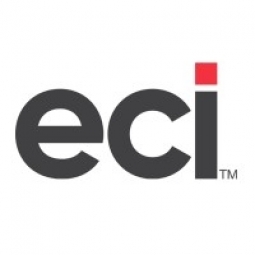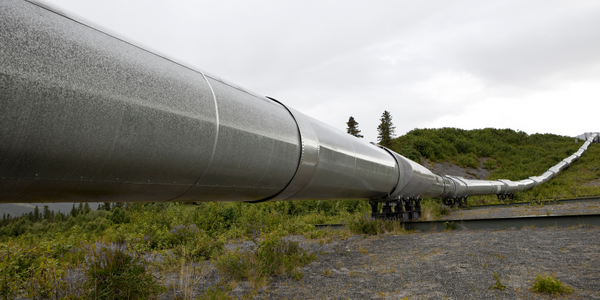公司规模
SME
地区
- America
国家
- United States
产品
- E2 Web-based Shop System
技术栈
- SaaS
实施规模
- Enterprise-wide Deployment
影响指标
- Productivity Improvements
- Cost Savings
技术
- 平台即服务 (PaaS) - 连接平台
适用功能
- 离散制造
用例
- 库存管理
- 远程资产管理
服务
- 云规划/设计/实施服务
- 培训
关于客户
National Flag Company 是一家位于美国的定制旗帜制造公司。该公司拥有悠久的历史和传统,已运营 150 年。尽管历史悠久,但他们的旗帜制作方式基本与 20 世纪 50 年代相同。该公司正在寻找一项重大升级,以帮助他们更好地在车间沟通、记录利润率和跟踪员工时间。他们做了很多定制制造工作,并且在跟踪订单方面遇到了困难。
挑战
国家旗帜公司正在努力解决车间缺乏沟通、无法记录利润率以及难以跟踪员工时间的问题。他们正在做大量的定制制造工作,但没有系统来跟踪他们的订单。他们的旧系统不允许他们跟踪工作或成本,他们必须手动备份数据并将其托管在自己的服务器上,这会产生额外成本。他们也无法远程工作,这限制了他们的灵活性和效率。
解决方案
National Flag Company 实施了 E2 基于 Web 的商店系统,这是一款 SaaS 产品,可帮助他们跟踪库存并了解哪些工作是赚钱的或亏钱的。该系统允许订单轻松地通过模块从估算到发货,从而改善了生产流程,改善了部门之间的沟通。该公司还受益于该系统的远程功能,这使他们能够从任何有互联网连接的地方查看工作状态和日常运营情况。该公司利用多种不同的培训方法来学习如何使用该系统,包括在线课程、电话课程和 Shoptech 社区。
运营影响

Case Study missing?
Start adding your own!
Register with your work email and create a new case study profile for your business.
相关案例.
.png)
Case Study
Improving Vending Machine Profitability with the Internet of Things (IoT)
The vending industry is undergoing a sea change, taking advantage of new technologies to go beyond just delivering snacks to creating a new retail location. Intelligent vending machines can be found in many public locations as well as company facilities, selling different types of goods and services, including even computer accessories, gold bars, tickets, and office supplies. With increasing sophistication, they may also provide time- and location-based data pertaining to sales, inventory, and customer preferences. But at the end of the day, vending machine operators know greater profitability is driven by higher sales and lower operating costs.

Case Study
Remote Wellhead Monitoring
Each wellhead was equipped with various sensors and meters that needed to be monitored and controlled from a central HMI, often miles away from the assets in the field. Redundant solar and wind generators were installed at each wellhead to support the electrical needs of the pumpstations, temperature meters, cameras, and cellular modules. In addition to asset management and remote control capabilities, data logging for remote surveillance and alarm notifications was a key demand from the customer. Terra Ferma’s solution needed to be power efficient, reliable, and capable of supporting high-bandwidth data-feeds. They needed a multi-link cellular connection to a central server that sustained reliable and redundant monitoring and control of flow meters, temperature sensors, power supply, and event-logging; including video and image files. This open-standard network needed to interface with the existing SCADA and proprietary network management software.

Case Study
Hospital Inventory Management
The hospital supply chain team is responsible for ensuring that the right medical supplies are readily available to clinicians when and where needed, and to do so in the most efficient manner possible. However, many of the systems and processes in use at the cancer center for supply chain management were not best suited to support these goals. Barcoding technology, a commonly used method for inventory management of medical supplies, is labor intensive, time consuming, does not provide real-time visibility into inventory levels and can be prone to error. Consequently, the lack of accurate and real-time visibility into inventory levels across multiple supply rooms in multiple hospital facilities creates additional inefficiency in the system causing over-ordering, hoarding, and wasted supplies. Other sources of waste and cost were also identified as candidates for improvement. Existing systems and processes did not provide adequate security for high-cost inventory within the hospital, which was another driver of cost. A lack of visibility into expiration dates for supplies resulted in supplies being wasted due to past expiry dates. Storage of supplies was also a key consideration given the location of the cancer center’s facilities in a dense urban setting, where space is always at a premium. In order to address the challenges outlined above, the hospital sought a solution that would provide real-time inventory information with high levels of accuracy, reduce the level of manual effort required and enable data driven decision making to ensure that the right supplies were readily available to clinicians in the right location at the right time.










